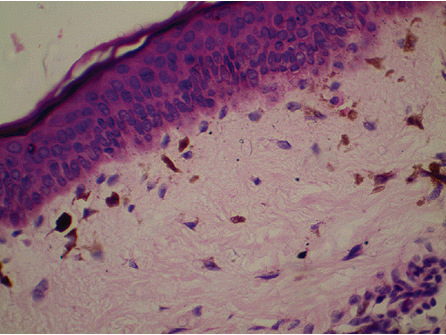What are Tricolor, Five-color, and Blue color Vitiligo?

This time I want to share with you this topic: what is tricolor, five-color, and Blue Color vitiligo?
I. What is tricolor vitiligo?
Tricolor vitiligo is mainly seen in untreated vitiligo patients and is mostly manifested as a clear brown intermediate band between the patient's depigmented lesions and the surrounding normal skin color, uniform in color and the same color between different white patches in the same patient. The skin of the lesion is seen in three colors from the inner to outer: white (complete depigmentation of the lesion), brown, and normal skin color.
II. What is five-color vitiligo?
Five-color vitiligo can occur in any part of the skin. Most of the lesions of five-color vitiligo have more white and brownish shades, and its treatment is the same as vitiligo. The appearance of five-colored vitiligo suggests that this patient's condition is in the progressive stage caused by the isomorphic reaction. The patient should pay attention to take protective measures for their skin and receive timely treatment from a professional vitiligo hospital. There are mainly five types of skin for five-color vitiligo, the order from the inner to outer is white, light brown, yellowish-brown, dark brown, and the surrounding skin with normal skin color. This condition is in the developmental stage of generalized or universal type of vitiligo and should be treated in time to bring the condition under control early.
III. What is blue vitiligo?
Blue vitiligo is relatively unknown to most people because many people are still unaware of the phenomenon that the shade of white spots can turn blue. Blue vitiligo is a rare disease that refers to a vitiligo patient whose condition is in the developmental stage and is interspersed with other diseases, such as infection with HIV.
The white spots appear blue before the local skin without inflammation and itching symptoms, the occurrence of blue vitiligo at the same time or after can appear blue nail semilunar, that is, in the proximal end of the fingernail plate semilunar from white to blue and nail plate appear longitudinal melanin band. Patients with blue vitiligo should be treated separately for intercalated diseases such as human immunodeficiency virus infection and vitiligo. After treatment, the blue color will gradually disappear as the vitiligo condition is controlled and the melanin is regenerated and colored.



Leave a Comment